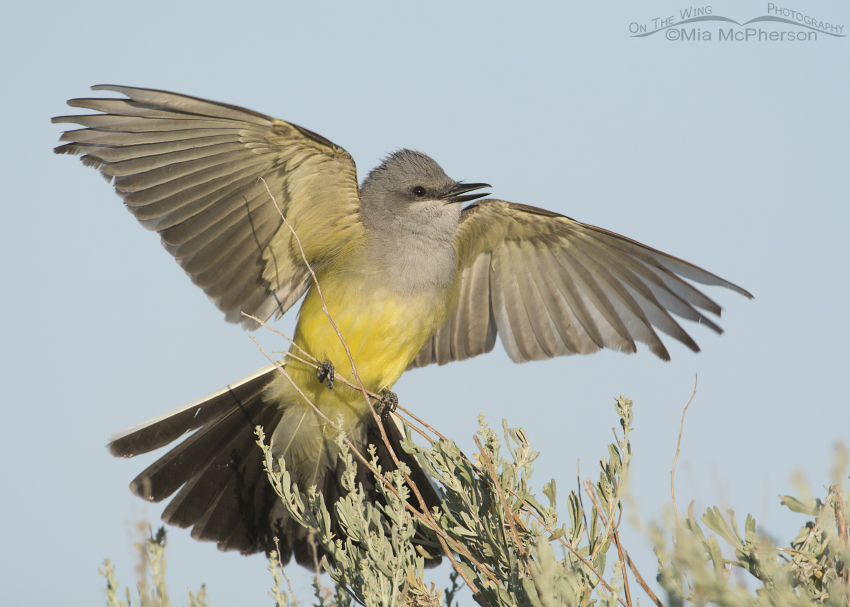 Male Long-billed Curlew portrait – Nikon D7100, f9, 1/1000, ISO 500, +0.7 EV, Nikkor 200-400mm VR with 1.4x TC at 400mm natural light
Male Long-billed Curlew portrait – Nikon D7100, f9, 1/1000, ISO 500, +0.7 EV, Nikkor 200-400mm VR with 1.4x TC at 400mm natural light
Yesterday morning I had Western Kingbirds and Long-billed Curlews in my viewfinder on Antelope Island State Park. The light was lovely and there was a slight breeze that kept the biting gnats (no-see-ums) at bay.
The Curlews eggs have hatched and their chicks are roaming around nearly hidden in the grass, they are very difficult to photograph because of their size, the height of the vegetation and how they blend in so well with the habitat. The adults do stand out well though and this male came in so close to the vehicle that I was able to take several portraits of it. The female curlews often leave the male to raise the chicks after a period of time.
 Western Kingbird display – Nikon D7100, f8, 1/1250, ISO 500, +0.7 EV, Nikkor 200-400mm VR with 1.4x TC at 400mm natural light
Western Kingbird display – Nikon D7100, f8, 1/1250, ISO 500, +0.7 EV, Nikkor 200-400mm VR with 1.4x TC at 400mm natural light
The Western Kingbirds arrive in Utah later than the curlews do and the kingbirds are just now building nests and courting. This male kingbird opened its wings and fanned its tail while calling when the female came in view of the nesting location with nesting material. Only the female Western Kingbirds build the nest, incubate and brood the young. The males sure have it easy! The kingbirds are fun to photograph but they are also unpredictable and move fast so they can be frustrating subjects.
It won’t be too long before the Western Kingbirds will also have young to look after.
Mia
PS, I don’t give out nest locations for the safety and well being of the birds.


Mia–you’re providing us with some wonderful close-up portraits of various birds and Mammals (ex, the curlew and the coyote). Thanks!
Lovely portrait of the long-billed Curlew and display of feathers on the Western Kingbird. Mia, regarding behaviour, do they “hover” in the air like the Eastern Kingbird?
Stunning portrait of the curlew – and yes, the kingbird does its *onerous* duties well. And you captured him at it superbly.
Two wonderful shots! Love detail of the curlew, though it makes me a bit sad as it reminds me of the book, “The Last Curlew”, a book I’ll never forget…Also love the fanned wings and detail of the Kingbird, and of course, the context (vegetation/perch) and composition of that shot….nice!!!
Excellent captures, Mia! I just love those Western Kingbirds.
I love both of these photographs, but having just watched a Great-crested Flycatcher do exactly the same thing as your Western, I really like that one!
(Thank you for your decision to not disclose nest locations!)
Beautiful photos
Beautiful, the head shot, really well photographed Mia.